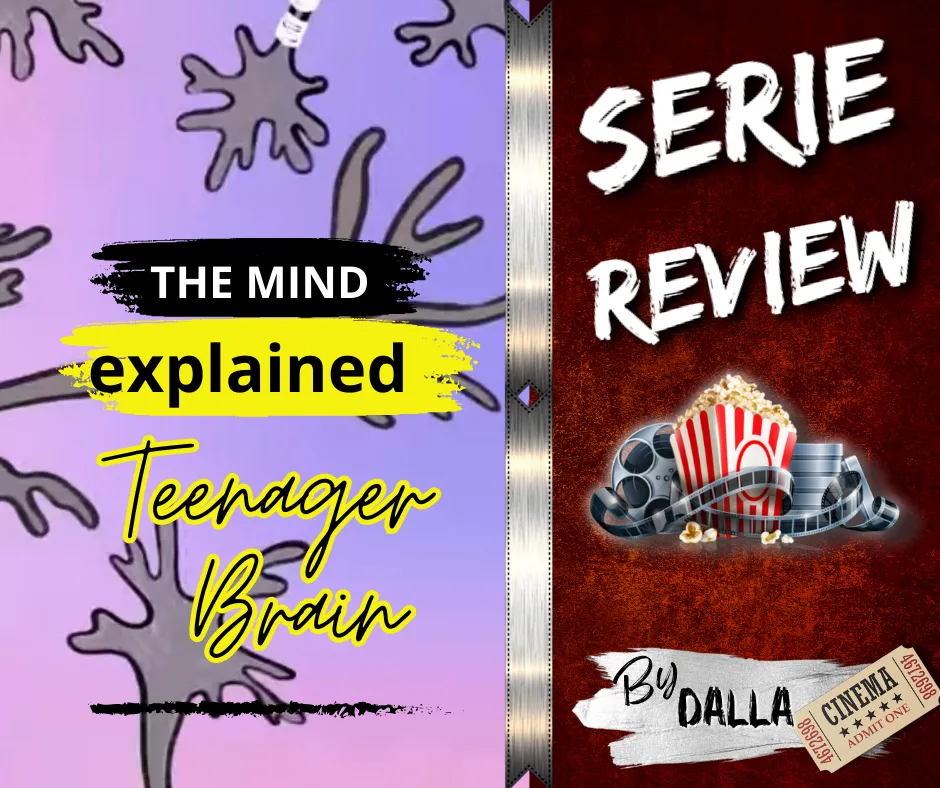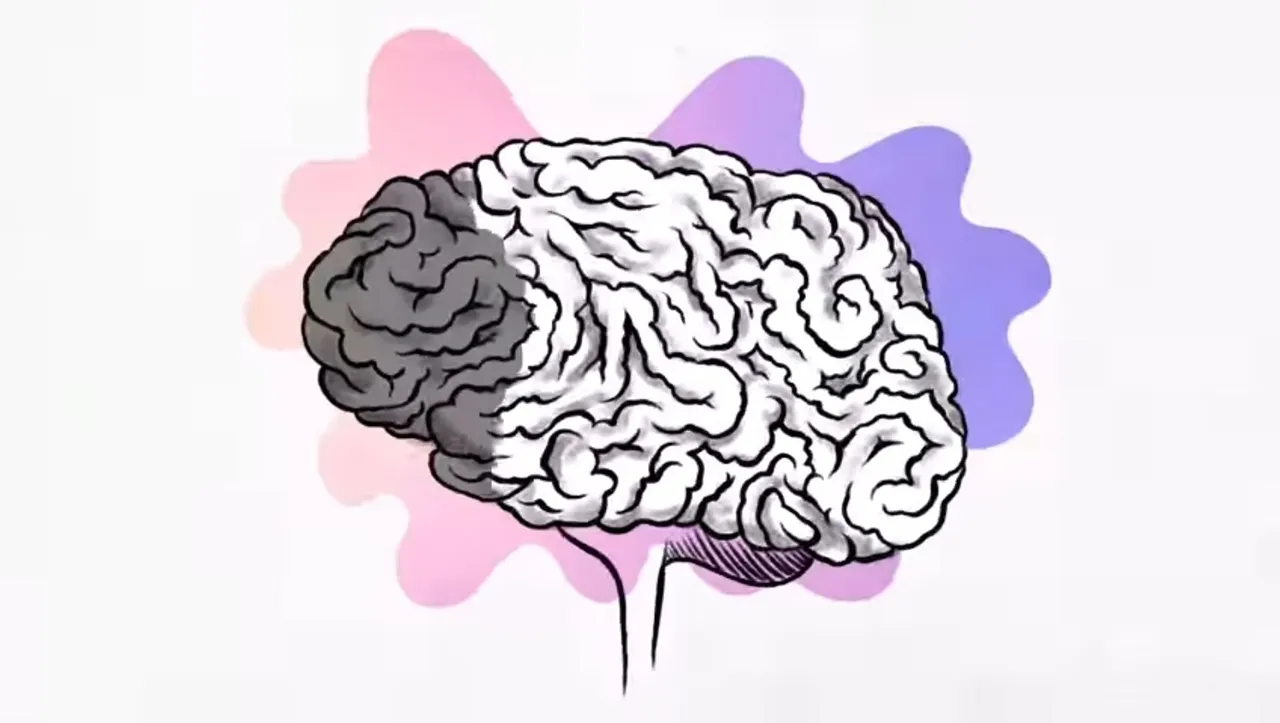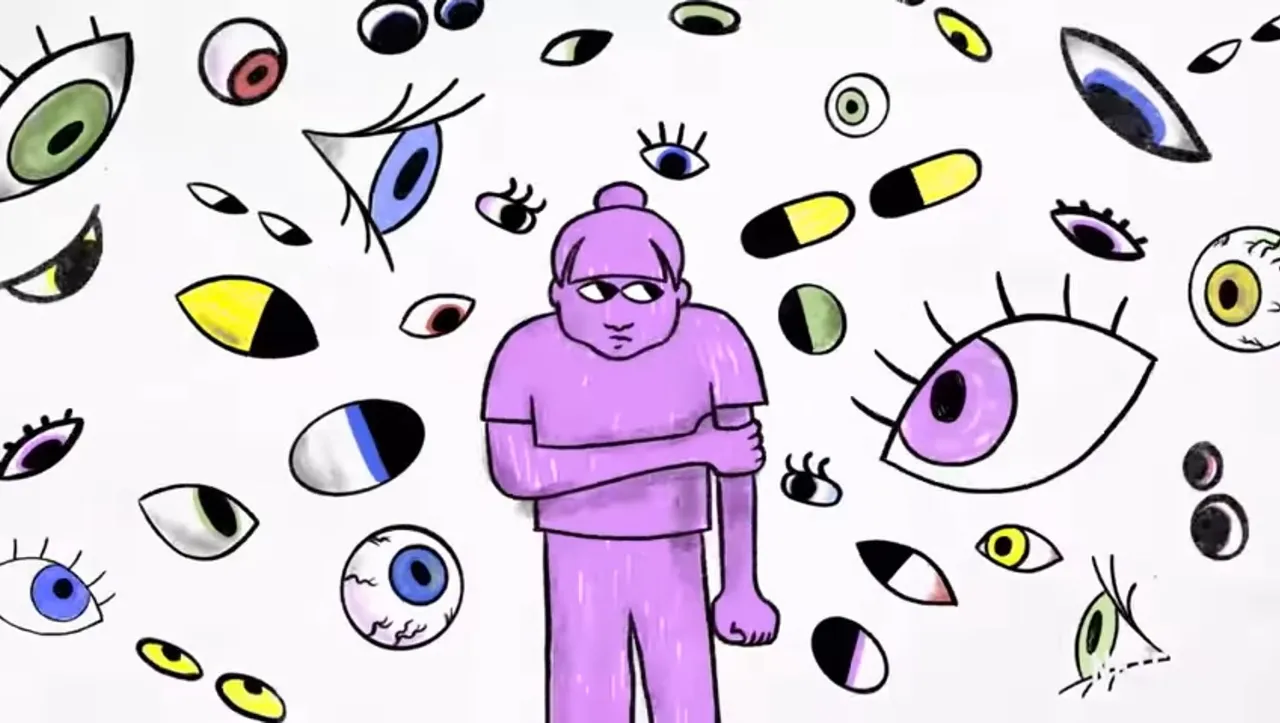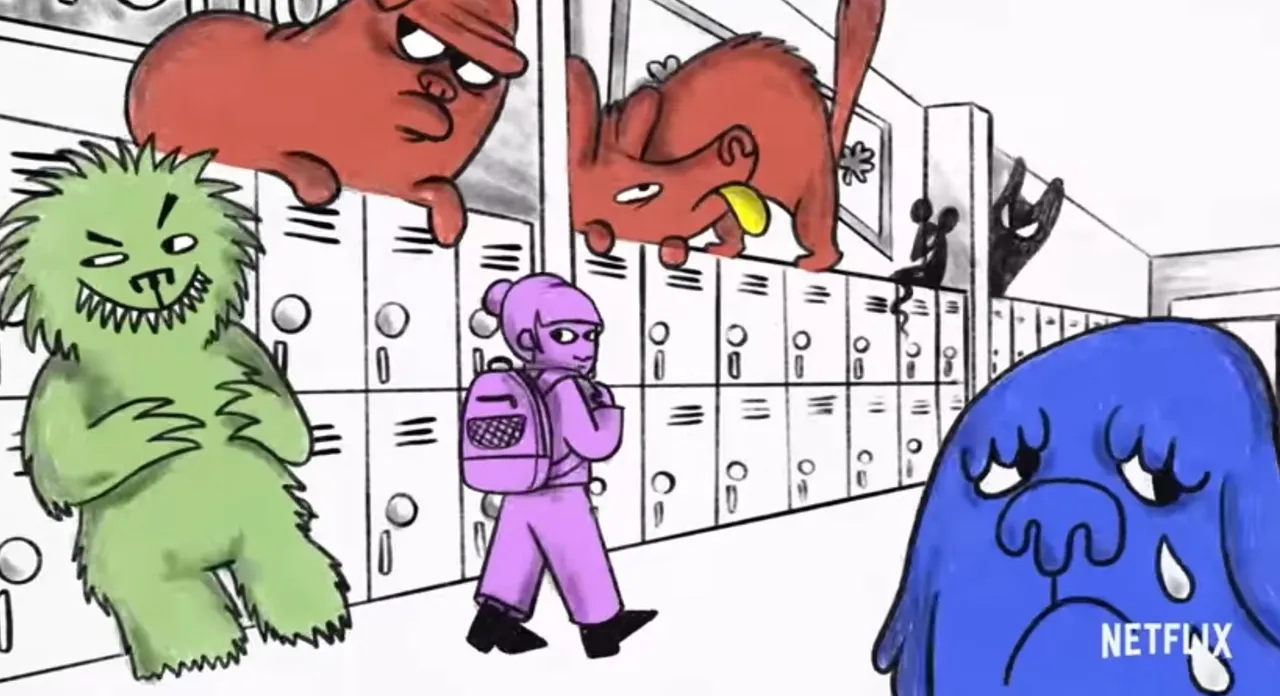

¡Saludos mis queridos espectadores del cine de #hive! Continuando con mi serie de post sobre los capítulos de la serie "La Mente en pocas palabras", hoy vengo a hablarles de un capítulo que les servirá de mucha ayuda para entender los cambios de sus hijos, amigos o familiares, que pasan por el difícil periodo de la Adolescencia.
Este capítulo se titula: "Cerebro Adolescente" y en él explican que, los cambios que comúnmente se asocian en la adolescencia a alteraciones hormonales, no son solo productos de eso, sino que en realidad todo es un proceso mucho más complejo de lo que parece ser.
Greetings my dear #hive movie viewers! Continuing with my series of posts about the chapters of the series "The Mind Explained", today I come to tell you about a chapter that will be very helpful to understand the changes of your children, friends or family members, who go through the difficult period of puberty.
This chapter is titled: "Adolescent Brain" and in it they explain that the changes that are commonly associated in adolescence to hormonal alterations, are not only products of that, but in reality everything is a much more complex process than it seems to be.

Me pareció súper importante hablar bien de este capítulo en mi blog, tomando en cuenta de que gran parte de los Trastornos Emocionales se desarrollan en esta etapa de la vida, que es tan compleja, y a la que muchos no le dan la importancia que amerita haciéndoles a sus propios hijos o conocidos adolescentes, el proceso aún más difícil para ellos, de lo que ya es.
Hay muchísimas cosas importantes en el capítulo que intentan explicar, por eso haré un resumen más o menos significativo de los puntos para que se sientan motivados a verlo por completo, por eso, como he dicho en otros post, Es probable que consigan algunos spoilers por aquí, sólo advierto, pero es una serie documental sobre el cerebro humano, la cantidad de información que proporcionan es muchísima y lo que yo diga aquí, no será nada en comparación con lo que ellos aportan y, además, este post tendrá mucho de mi interpretación. Una vez aclarado eso, como siempre lo hago, prosigo…
I thought it was very important to talk about this chapter in my blog, taking into account that most of the Emotional Disorders develop in this stage of life, which is so complex, and to which many do not give the importance it deserves, making the process even more difficult for their own children or adolescent acquaintances, than it already is.
There are many, many important things in the chapter that they try to explain, that's why I will make a more or less significant summary of the points so that you feel motivated to watch it completely, that's why, as I have said in other posts, You will probably get some spoilers around here, just warning, but it is a documentary series about the human brain, the amount of information they provide is a lot and what I say here, will be nothing compared to what they provide and, besides, this post will have a lot of my interpretation. Having clarified that, as I always do, I continue....



El capítulo comienza explicando lo que les dije al principio y que no todo es por causas hormonales, ya que en realidad el cerebro de un adolescente, por mucho que ellos digan lo contrario, no es un cerebro maduro, la madurez se alcanza alrededor de los 25 años de edad en gran parte de las personas.
Cuando hablamos de madurez nos referimos a un compendio de cosas, pero en esa edad, sobre todo, hay escasez del pensamiento lógico debido a que el proceso de maduración empieza desde la parte posterior del cerebro hasta la parte anterior, cuando estamos en la adolescencia estamos justo en la etapa del mayor desarrollo de la porción relacionada a las emociones y es por esto que predomina el pensamiento basado en las emociones, es decir, el proveniente de la amígdala cerebral, que es parte de nuestro cerebro primitivo.
Por eso es que veremos a los adolescentes buscando alcanzar objetivos sin mucho sentido lógico y muchas veces desarrollar relaciones interpersonales solo para sentirse satisfechos emocionalmente por sobre todas las cosas, sin importar mucho más allá.
En esta etapa además del predominio del funcionamiento de esta parte del cerebro, también tenemos un despertar de los instintos básicos, es decir, los reproductivos, y serán estos los que predominen por sobre todos los demás, esto redireccionará muchísimas de las actuaciones de un adolescente, es decir enfocarse en comportarse de determinada forma y relacionarse con determinadas personas que lo ayuden a acercarse a ese objetivo reproductivo.
Sí, por eso no podemos decir que todo se debe al cerebro, hay una relación directa entre neurotransmisores, áreas cerebrales, picos hormonales y todo eso es lo que causa todo ese montón de caracteres poco entendibles por los adultos e, incluso, más por el propio adolescente, porque ellos mismos no comprenden el proceso que están pasando, solo se dejan llevar por lo que sienten y quieren.
La realidad es que el adolescente empieza a sentir demasiadas cosas a la vez sin estar realmente preparado para nada de eso, necesitan pertenecer, seguir sus impulsos reproductivos, sus sentimientos, las pautas de su familia, quienes frecuentemente no los entienden y, además, comportarse de una forma que agrade a la sociedad.
Deben lidiar con todo eso que les acabo de decir sin haber llegado a desarrollar una de las porciones más importantes del cerebro humano, la porción prefrontal, la que corresponde a la parte más anterior de nuestro cerebro y la última en desarrollarse, que es la que se relaciona al pensamiento lógico, razonamiento, comportamiento, en general las funciones ejecutivas superiores, como el control en la toma de decisiones, atención, concentración y la relación de todos esos aspectos a la hora de actuar.
The chapter begins by explaining what I said at the beginning and that not everything is due to hormonal causes, since in reality the brain of a teenager, no matter how much they say otherwise, is not a mature brain, maturity is reached around 25 years of age in most people.
When we talk about maturity we refer to a compendium of things, but at that age, above all, there is a shortage of logical thinking because the maturation process starts from the back of the brain to the front, when we are in adolescence we are just at the stage of greater development of the portion related to emotions and that is why emotion-based thinking predominates, that is, the one coming from the cerebral amygdala, which is part of our primitive brain.
That is why we will see adolescents seeking to achieve goals without much logical sense and often develop interpersonal relationships just to feel emotionally satisfied above all things, without caring much beyond.
At this stage, in addition to the predominance of the functioning of this part of the brain, we also have an awakening of the basic instincts, that is, the reproductive ones, and these will be the ones that predominate over all the others, this will redirect many of the actions of a teenager, that is to focus on behaving in a certain way and relate to certain people to help them get closer to that reproductive goal.
Yes, that is why we cannot say that everything is due to the brain, there is a direct relationship between neurotransmitters, brain areas, hormonal peaks and all that is what causes all that bunch of characters that are not easily understood by adults and even more by the adolescent himself, because they themselves do not understand the process they are going through, they just let themselves be carried away by what they feel and want.
The reality is that the adolescent begins to feel too many things at once without being really prepared for any of it, they need to belong, to follow their reproductive impulses, their feelings, the guidelines of their family, who often do not understand them and, in addition, to behave in a way that pleases society.
They must deal with all that I have just told you without having developed one of the most important portions of the human brain, the prefrontal portion, which corresponds to the most anterior part of our brain and the last to develop, which is related to logical thinking, reasoning, behavior, in general the higher executive functions, such as control in decision making, attention, concentration and the relationship of all these aspects at the time of acting.



Es por eso que vamos a ver 3 características frecuentes en el cerebro de un adolescente y de las cuales hablan en el capítulo y son el elemento característico de ellos: 1-Toma de riesgos, 2- Búsqueda de Novedad, 3- Relaciones con compañeros, y esos tres factores son los principales determinantes de todas sus conductas.
Hace poco hablaba en un post sobre la influencia de los padres en el comportamiento de los hijos adolescentes que, si bien tienen una influencia importante, realmente solo equivale a un promedio de un 20%, el resto del comportamiento va a estar determinado por esos 3 factores que les acabo de escribir, es por ello la importancia de tener buena comunicación con sus hijos adolescentes, porque en ese momento sus actitudes estarán centradas en esos 3 factores, sobre todo la relación con los compañeros.
Es esa relación con los compañeros la que hará que se potencien los comportamientos, porque una de las búsquedas principales a esa edad es pertenecer a un lugar, es una crisis de identidad, y si sienten aceptación por parte de sus compañeros, entonces habrá más probabilidad de repetir ciertas acciones porque es cuando el circuito cerebral de recompensa se activa y libera la mayor cantidad de neurotransmisores de la felicidad.
Sí, es así, son esos 3 factores, los riesgos, la novedad y las relaciones los que harán que el adolescente se sienta más feliz, por ende, intentará redireccionar todas sus acciones a esos 3 fines principales porque, de hecho, a esa edad es cuando se da la mayor liberación de esos neurotransmisores, es por eso, como dicen en el programa, que las experiencias que vivimos en la adolescencia se recuerdan más intensamente, es porque los picos de ellos son mayores, sobre todo el de la Dopamina.
That is why we are going to see 3 frequent characteristics in the brain of an adolescent and which they talk about in the chapter and are the characteristic element of them: 1- Risk taking, 2- Novelty seeking, 3- Relationships with peers, and those three factors are the main determinants of all their behaviors.
I recently talked in a post about the influence of parents on the behavior of teenage children that, although they have an important influence, it really only amounts to an average of 20%, the rest of the behavior will be determined by those 3 factors that I just wrote, that is why it is important to have good communication with their teenagers, because at that time their attitudes will be focused on those 3 factors, especially the relationship with peers.
It is that relationship with peers that will enhance behaviors, because one of the main searches at that age is to belong to a place, it is an identity crisis, and if they feel acceptance by their peers, then there will be more likely to repeat certain actions because that is when the brain reward circuit is activated and releases the largest amount of neurotransmitters of happiness.
Yes, it is so, it is those 3 factors, risks, novelty and relationships that will make the teenager feel happier, therefore, he will try to redirect all his actions to those 3 main purposes because, in fact, at that age is when the greatest release of these neurotransmitters occurs, that is why, as they say in the program, that the experiences we live in adolescence are remembered more intensely, it is because the peaks of them are higher, especially that of Dopamine.



Muchos crecemos escuchando de nuestros padres que debemos ser fieles a nosotros mismos, a nuestros gustos, a que no nos debe importar lo que piensen o digan los otros sobre nosotros, pero justo en esta etapa existe un despertar por parte del adolescente, ese despertar se basa en descubrir lo que significa ser juzgados.
Empezamos a comprender que el ser como queremos ser implica riesgos, el riesgo de no ser aceptados, es por eso que empieza una revolución emocionalmente donde intentamos pertenecer, pero a la vez ser nosotros, empezamos a sentir que somos el centro de las miradas y que cualquier error que cometamos se puede pagar con la exclusión, por eso preferimos en muchas oportunidades copiar los comportamientos de otros que ya fueron aceptados.
Es justamente por esta revolución del yo que existe mayor probabilidad a esta edad de desarrollar Enfermedades Emocionales que pueden llegar a ser determinantes en el resto de su vida, porque es cuando nos empezamos a sentir más vulnerables ante los ojos y la opinión de otros, opinión que no nos importaba cuando éramos niños.
Es justamente esta revolución del yo y la búsqueda de su propia identidad, lo que puede hacer también que se generen un montón de experiencias positivas que también pueden ser determinantes en la adultez, es la etapa donde estamos más abiertos al cambio, donde experimentamos sin tanto temor al fracaso, sin tanta culpabilidad, es el momento en que podemos convertirnos en los mayores defensores de nuestras creencias, básicamente es el momento en que sentimos que podemos cambiar el mundo y es por eso que la mayoría de las revoluciones mundiales se dan por grupos de personas de estas edades.
Como ven amigos, la adolescencia es un proceso sumamente complejo a nivel cerebral, es por eso que la función de los padres, o los adultos que rodeen al adolescente debe ser la de actuar como esa corteza prefrontal que aún no ha llegado a desarrollarse en el cerebro de sus adolescentes, siempre con mucha paciencia y empatía, comprendiendo que son seres únicos, que lo que nosotros hayamos vivido no necesariamente es lo que ellos están viviendo porque todos somos seres individuales viviendo en circunstancias completamente diferentes.
Many of us grow up hearing from our parents that we should be true to ourselves, to our tastes, that we should not care what others think or say about us, but just at this stage there is an awakening on the part of the adolescent, this awakening is based on discovering what it means to be judged.
We begin to understand that being the way we want to be implies risks, the risk of not being accepted, that is why an emotional revolution begins where we try to belong, but at the same time to be us, we begin to feel that we are the center of attention and that any mistake we make can be paid with exclusion, so we prefer in many opportunities to copy the behaviors of others who have already been accepted.
It is precisely because of this revolution of the self that there is a greater probability at this age of developing Emotional Illnesses that can become determinant in the rest of your life, because it is when we begin to feel more vulnerable before the eyes and the opinion of others, an opinion that did not matter to us when we were children.
It is precisely this revolution of the self and the search for their own identity, which can also generate a lot of positive experiences that can also be decisive in adulthood, is the stage where we are more open to change, where we experience without much fear of failure, without much guilt, is the time when we can become the biggest defenders of our beliefs, basically it is the time when we feel we can change the world and that is why most of the world revolutions are given by groups of people of these ages.
As you can see friends, adolescence is an extremely complex process at a cerebral level, that is why the role of parents, or adults surrounding the teenager should be to act as that prefrontal cortex that has not yet developed in the brain of their teenagers, always with great patience and empathy, understanding that they are unique beings, that what we have lived is not necessarily what they are living because we are all individual beings living in completely different circumstances.

¿Me gustó el capítulo? ¡Lo amé! debo decir que lo había pasado por alto, de todos los capítulos pensé que este no sería tan interesante y terminó siendo realmente un tiempo bien invertido.
¿Lo vería otra vez? ¡Totalmente! con mi sobrinito adolescente para que intente comprenderse así mismo en su proceso actual y para que no se sienta juzgado por los demás, que sepa que algunos lo comprendemos como yo.
¿Lo recomendaría? Sí, a todo el que tenga hijos o familiares adolescentes, por ahora se lo recomendé a mis 2 hermanos que ambos tienen un adolescente, aunque en realidad todo mundo debería ver esta serie.
Did I like the chapter?I loved it! I must say I had overlooked it, of all the chapters I thought this one wouldn't be as interesting and it ended up being really time well spent.
Would I watch it again? Totally! with my little teenage nephew so he can try to understand himself in his current process and so he doesn't feel judged by others, so he knows that some of us understand him like I do.
Would I recommend it? Yes, to anyone who has teenage children or family members, for now I recommended it to my 2 siblings who both have a teenager, although in reality everyone should watch this series.

Thank you for reading me!

All the images were taken as screenshots from the documentary on Netflix.
@liveofdalla using Canvas App and Picsart App.
